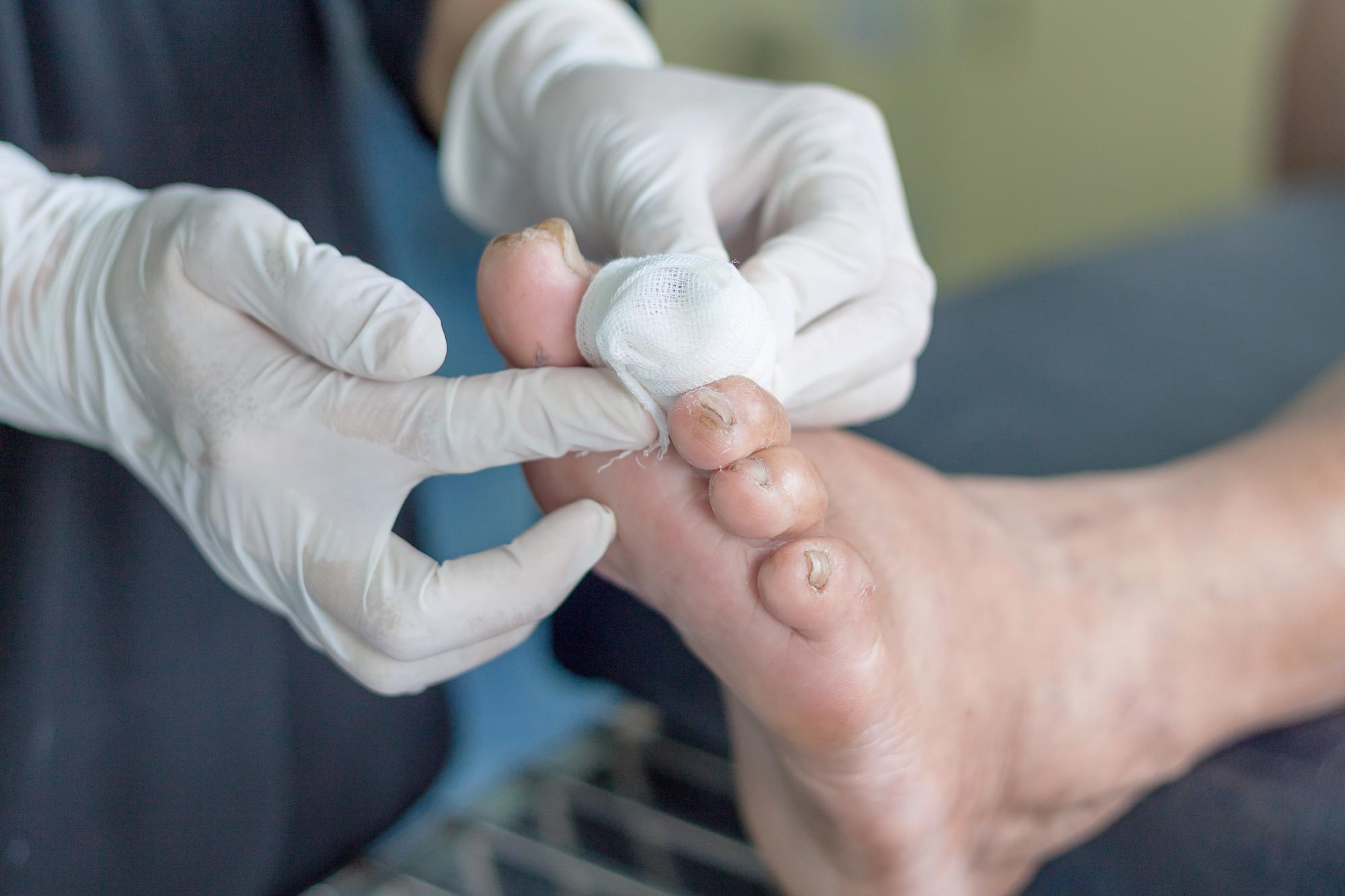More than 25 percent (25%) of American seniors are affected by diabetes, a chronic illness that can cause a myriad of complications. A staggering 10 to 15% diabetics suffer from leg or foot ulcers. Untreated, these wounds can get so bad that diabetic foot amputations may be necessary. Foot ulcers account in excess of 80 percent of the amputations.
The management of diabetes is a complicated problem that requires a comprehensive approach that goes beyond the control of glucose. To achieve this, regular foot care is crucial to avoid amputations due to diabetes.

Understanding the Landscape
Diabetes and its complications make for a complicated terrain to navigate. Patients suffering from diabetes are more likely to develop leg and foot ulcers. This underscores the importance of proactive care and an increased awareness. The statistics are stark, and it is evident that understanding the complexities of these conditions is essential to fight against the amputation.
The Amputation Conundrum
Amputation is a looming risk for those suffering from diabetes. It’s a reality that is more than simple statistics, impacting individuals on a deeply personal scale. It’s a long road from a minor ailment to the possibility of an amputation because of diabetes.
Daily Foot Care: A Protection from Amputation
The foundation of diabetes amputation prevention lies in daily foot care. This daily routine is not solely about hygiene, it is a method of identifying and corrects potential problems before they get grave. This routine is comprised of everything from checking your feet for any injuries to moisturizing them properly.
Vascular Specialists: What is Their Function
Although vascular specialists might not directly manage diabetes however their expertise plays a pivotal role in reducing the problems that are associated with the condition. Establishing optimal blood flow to the lower extremities is a crucial aspect of care that aims at easing pain in the legs as well as facilitating healing of wounds. This approach to collaboration is focused on one thing in reducing the risk of diabetes-related amputations.
Strategies for preventing Amputation
To navigate the maze of amputations in diabetes requires a blend of awareness, vigilance, and skilled intervention. For those who are struggling with diabetes, taking a proactive approach is essential. Regular checkups with healthcare providers including vascular specialists can aid in detecting diabetes early and assist in addressing.
Leg Ulcers: Understanding the Triggers
Leg ulcers are frequently the precursors of more serious problems. They require care and understanding. Being aware of the triggers leading to the formation of leg ulcers is a vital step. If it’s because of nerve disease or poor circulation, or even a combination of these causes, identifying their sources allows for specific interventions.
Education as empowerment
Instilling in people suffering from diabetes awareness of the risks and preventive measures is fundamental. Both in the healthcare setting and within the community at large, educational initiatives will bridge the gap from awareness to action. Being aware of the ramifications of wounds that appear harmless can provide prompt and timely treatment, stopping the necessity of diabetic foot amputation.
Private Battles as well as Collective Triumphs
Fighting diabetes-related complications is not an individual battle, it is a collective victory. Support networks can provide a opportunity to exchange experiences, share knowledge with others, and develop coping skills. If you are faced with the possibility of an amputation the emotional strain can be overwhelming. Community support networks can provide security and strength.
In the end, the trek through leg ulcers, diabetes and the possibility of amputations are many-sided. A regular foot check-up is the primary line of defense. Vascular specialists’ experience can be a valuable benefit to reducing the severity of complications. Patients suffering from diabetes can decrease the chance of having to be amputations through educating themselves, taking preventive measures and developing an underlying support system.